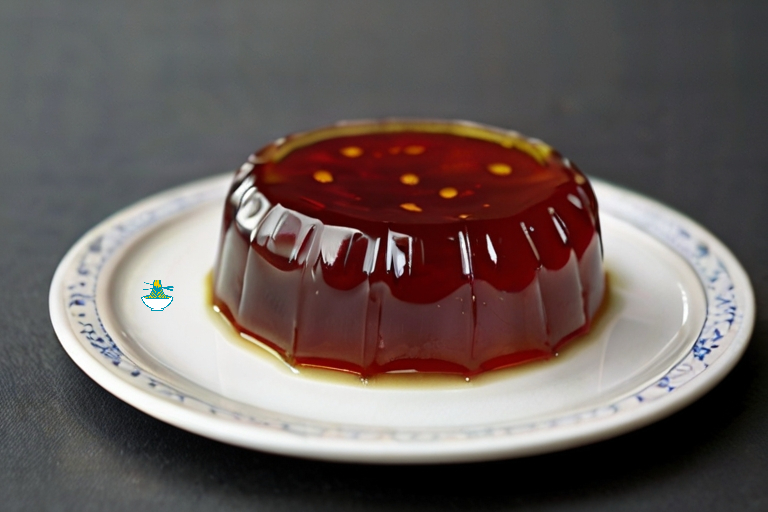Indulge in the rich gastronomic tapestry of Estonia with Sült, a traditional delicacy that encapsulates the essence of the nation's culinary heritage. Known for its hearty and flavorful appeal, Sült is a savory meat jelly that has been cherished for generations in Estonian households and restaurants alike.
In this immersive culinary journey, discover the intricate process behind crafting Sült, where tender cuts of pork, beef, and sometimes poultry are simmered to perfection with aromatic spices and herbs. The resulting broth is then solidified into a jelly-like consistency, encasing tender meat pieces within.
Embark on a sensory exploration as you delve into the nuanced flavors and textures of Sült, from its gelatinous exterior to the succulent meat within. Paired with traditional accompaniments such as tangy pickles, hearty rye bread, and zesty mustard, Sült offers a symphony of tastes that delight the palate and evoke a sense of nostalgia for simpler times.
Whether enjoyed as a hearty appetizer, a satisfying main course, or a cherished component of festive celebrations, Sült is more than just a dish—it's a cultural emblem that reflects Estonia's enduring culinary traditions. Join us in savoring Sült and experience the authentic taste of Estonia's past, preserved in every delectable bite.
Here's a traditional recipe for Sült, the cold pork jelly from Estonia:
Ingredients:
- 2-3 pounds of pork trotters or hocks (can also use pork knuckles or other gelatinous cuts)
- 2-3 pounds of pork shoulder or belly
- 1 onion, peeled and halved
- 2 carrots, peeled and roughly chopped
- 2 celery stalks, roughly chopped
- 2 bay leaves
- 10 whole peppercorns
- 1 teaspoon of salt
- Water, enough to cover the meat
- Mustard, for serving
Instructions:
1- Rinse the pork trotters or hocks (or other gelatinous cuts) under cold water to remove any impurities. Place them in a large pot along with the pork shoulder or belly.
2- Add the onion, carrots, celery, bay leaves, peppercorns, and salt to the pot.
3- Pour enough water into the pot to cover the meat and vegetables completely.
4- Bring the pot to a boil over medium-high heat. Once boiling, reduce the heat to low and let the mixture simmer gently, partially covered, for about 3-4 hours. Skim off any foam or impurities that rise to the surface during cooking.
5- After 3-4 hours, the meat should be very tender and falling off the bone. Remove the pot from the heat and allow it to cool slightly.
6- Carefully remove the meat and bones from the pot, using a slotted spoon or tongs. Strain the cooking liquid through a fine-mesh sieve or cheesecloth into a separate container. Discard the solids.
7- While the liquid is still warm, pour it into a mold or a shallow dish. Arrange the cooked meat pieces evenly in the liquid. Make sure the meat is fully submerged.
8- Place the mold or dish in the refrigerator and let it chill for at least 8 hours, or overnight, until the liquid has set into a jelly-like consistency.
9- Once the Sült has set, carefully unmold it onto a serving platter. Slice it into thick slices or cubes.
10- Serve the Sült cold, accompanied by mustard on the side. Enjoy as a traditional Estonian appetizer or snack.
Sült can be stored in the refrigerator for up to a week. Enjoy this classic Estonian dish and savor its rich flavors!
Nutritional Values:
Here are approximate nutritional values for the main ingredients used in making Sült:
Pork Trotters or Hocks (per 100g):
- Calories: 264 kcal
- Protein: 21.5g
- Fat: 19.5g
- Carbohydrates: 0g
- Fiber: 0g
- Sugars: 0g
benefits:
- Rich in protein which is essential for muscle growth and repair.
- Good source of healthy fats.
- Contains essential vitamins and minerals like iron, zinc, and B vitamins.
Pork Shoulder or Belly (per 100g):
- Calories: 458 kcal
- Protein: 16.4g
- Fat: 40.3g
- Carbohydrates: 0g
- Fiber: 0g
- Sugars: 0g
benefits:
- Provides protein for muscle maintenance and growth.
- Contains healthy fats, including monounsaturated fats.
- Rich in vitamins and minerals such as B vitamins, iron, and zinc.
Onion (per 100g):
- Calories: 40 kcal
- Protein: 1.1g
- Fat: 0.1g
- Carbohydrates: 9.3g
- Fiber: 1.7g
- Sugars: 4.7g
benefits:
- High in antioxidants which help protect the body from oxidative stress and inflammation.
- Contains compounds that may help reduce the risk of certain chronic diseases.
- Good source of fiber which supports digestive health.
Carrots (per 100g):
- Calories: 41 kcal
- Protein: 0.9g
- Fat: 0.2g
- Carbohydrates: 9.6g
- Fiber: 2.8g
- Sugars: 4.7g
benefits:
- Excellent source of beta-carotene, a precursor to vitamin A, important for vision health.
- Rich in antioxidants that may reduce the risk of certain cancers and cardiovascular diseases.
- Provides fiber for digestive health and weight management.
Celery (per 100g):
- Calories: 16 kcal
- Protein: 0.7g
- Fat: 0.2g
- Carbohydrates: 3g
- Fiber: 1.6g
- Sugars: 1.8g
benefits:
- Low in calories but high in fiber, making it a great choice for weight management.
- Contains antioxidants that help reduce inflammation and lower the risk of chronic diseases.
- Good source of vitamins and minerals, including vitamin K and potassium, which support heart and bone health.
Please note that these values are approximate and can vary based on factors such as cooking methods and specific cuts of meat used. Additionally, the nutritional values for Sült will depend on the proportions of ingredients used and any added seasonings or flavorings.


Comments